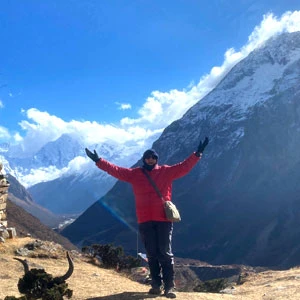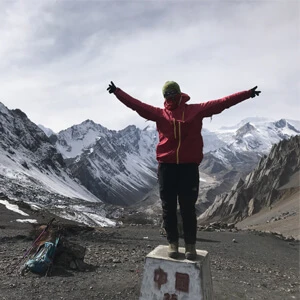Annapurna Round Trek With Base Camp Trekking Permit Cost Breakdown
Before you hit the trails of the Annapurna Circuit Trek and Annapurna Base Camp in Nepal, you will need to get two major permits.
TIMS Card (Trekkers’ Information Management System): This helps track trekkers on the trail and ensures safety support in case of emergencies. As per the latest update, you can’t get this on your own anymore. It must be issued through a registered trekking agency. It will cost you NRs 2,000 per person (approx. USD 15).
ACAP (Annapurna Conservation Area Permit): This permit helps to preserve the Annapurna region’s beauty, wildlife, and culture. It will cost you NRs 3,000 per person (approx. USD 22) and you can get them at Nepal Tourism Board Office, Bhrikutimandap (Kathmandu) or Pokhara.
Here, since the Annapurna Round with Base Camp Trek falls inside the conservation zone, not a restricted one, you do not need a restricted permit. To get these permits, you will need two passport-sized photos and your passport copy for permit registration. Additionally, you will need to keep physical copies of the permits with you as permit checks happen along the route. Likewise, your permits are single-entry and valid for your trekking duration.
Pro Tip: Always go through a government-registered trekking agency, such as Nepal Trekking Experts, to make your journey smoother, ensure your safety, and enjoy once-in-a-lifetime experience in the Himalayas.
Do I Need A Guide And Porter For The Annapurna Base Camp Trek In The Annapurna Circuit?
Absolutely yes! Hiring a guide and porter for the Annapurna Circuit Trek with Annapurna Base Camp is the smartest decision you will make for safety, comfort, and a deeper connection with the trail. The Annapurna Circuit is beautiful, yes, but it's also long, rugged, and rises to serious altitudes where navigation and acclimatization matter.
Here, the weather can change fast, and altitude sickness can creep in without warning. Hence, you will need to hire a professional trekking guide from a reputable agency like Nepal Trekking Experts with the following characteristics:
- Trained in high-altitude response, first aid, and emergency rescue.
- Acts as your interpreter, cultural guide, and walking Wikipedia of the Himalayas.
- Knows every side trail, shortcut, and hidden gem you would otherwise miss on your own.
- Helps you connect with the local Gurung and Magar communities
With Nepal Trekking Experts, every guide is a licensed local who knows these mountains like their backyard. Hiring a professional local guide will cost you USD 30 to 35 per day, which covers their salary, accommodation, meals, and insurance.
Moving on, since you will be trekking above 5,000 meters, carrying a heavy backpack might be a struggle. Therefore, you will need to hire a professional porter to carry the weight so you can fully enjoy the views, soak in the culture, and save your knees. Our experienced porters in Nepal Trekking Experts can carry up to 20 kg. They will assist with logistics, gear, and even morale when you are tired. They will cost you around USD 25 per day, covering salary, meals, accommodation, and insurance.
However, the guide and porter fees do not include their tips. While tipping is not mandatory, it is highly appreciated. We recommend at least 10% of the total cost, or more if you are completely satisfied with their services.
How Difficult is The Annapurna Circuit With Base Camp Trekking?
So, how difficult is the Annapurna Circuit with Base Camp Trekking in Nepal? Honestly, it's a challenge, but one that’s worth every blister and breath. This trek falls under the moderate to strenuous category. During the journey, you will be walking 6 to 8 hours a day through some of Nepal’s most rugged and diverse terrain, such as lush forests, deep river valleys, ancient stone steps, and eventually, wide-open alpine landscapes.
Here, one of the toughest parts is the altitude. You will gradually ascend throughout the circuit, enjoying highlights like Poon Hill (3,210 meters) and Annapurna Base Camp (4,180 meters). Here, the trek may get serious above 3,000 meters with the real challenge being Thorong La Pass at 5,416 meters, which is the highest point on the trek. To reach here, you will notice that even your breath feels heavy and your legs demand more breaks than usual. That’s why this journey is not just about fitness anymore, but also about how your body copes with less oxygen, and how well you stay hydrated, fueled, and motivated.
But here’s the thing: even beginners can do this trek. You just need to be well-prepared, and to physically prepare yourself, you will need to include cardio, leg strength, and hiking practice in your training regimen. More importantly, you will also need to keep a consistent pace and be mentally ready for long days, steep climbs, and unpredictable weather.
This is exactly why having a professional guide and porter makes the journey safer and so much more enjoyable. With Nepal Trekking Experts, you will be trekking with experienced locals who know this trail in and out. Our guides are trained in altitude response and emergency care; they know when to push and when to pause, and they can sense issues even before you do.
Similarly, we will provide you with a flexible, well-paced itinerary that is designed to balance acclimatization, comfort, and adventure. So yes, the Annapurna Circuit Trekking with Annapurna Base Camp is demanding, but with the right team, a good mindset, and some preparation, you will have one of the most rewarding experiences of your life.
Annapurna Circuit with Base Camp Trek, High Altitude Sickness and Prevention
The Annapurna Circuit Trek with Annapurna Base Camp in Nepal takes you on a wild ride. You will trek from the lowlands of Besisahar at around 800 meters, passing by the Poon Hill Viewpoint (3,210 meters) and Annapurna Base Camp (4,130 meters) to the dizzying heights of Thorong La Pass at 5,416 meters, which marks the trek’s highest and most demanding point. Most of your days are spent above 3,000 meters, where Acute Mountain Sickness (AMS) can start creeping in if you are not paying attention.
So, what exactly is altitude sickness? In simple terms, it’s your body struggling to adjust to lower oxygen levels at high altitudes. It kicks in when you ascend too quickly, and your system can’t keep up. You might feel a dull headache that won’t quit, nausea, light-headedness, loss of appetite, or just this heavy, sluggish feeling like your body’s moving through glue. If you ignore these symptoms, they can get worse and escalate to HAPE (High Altitude Pulmonary Edema) or HACE (High Altitude Cerebral Edema).
Thus, here is the golden rule: once you feel the symptoms, you must stop, rest, and hydrate. Don’t push through it. If things don’t improve, then you must descend with the help of your guide. Your guide, trained in high-altitude response and emergency evacuation, will know exactly what to do.
But the smarter move is to prevent altitude sickness altogether. Prevention is your real power tool on the Annapurna trek in Nepal. Below are a few trail-tested, altitude-proof tips to help you acclimate better:
- Climb high, sleep low: Gradually gain elevation during the day, but rest at a slightly lower altitude.
- Take rest days seriously: Use them to acclimatize, not power through extra mileage.
- Hydration is king: Drink 3 to 4 liters of water per day, even if you are not thirsty.
- Go slow: This isn’t a race. Trekking slowly allows your body to adapt naturally.
- No alcohol, no smoking: These dehydrate and weaken your body’s response to altitude.
- Eat carbs: Your body needs energy.
- Listen to your body: Don't ignore even mild symptoms. The earlier you catch it, the easier it is to manage.
- Consider Diamox: You can take the meds for altitude sickness, but only after consulting your doctor. It helps many trekkers adjust, especially above 3,000 meters.
Traveling with Nepal Trekking Experts means your guide and itinerary are altitude-aware, designed to give your body the time it needs to adjust. They have walked this trail a hundred times and know exactly when to push forward and when to slow down. That experience is gold when you are up against thin air and shifting terrain.
At the end of the day, altitude sickness is the one thing you don’t want to gamble with. Respect the mountains, respect your body, and you will have a much safer, more enjoyable Annapurna Circuit with Base Camp Trek in Nepal.
What is The Best Season And Time to Visit The Annapurna Circuit With Poon Hill ABC Trek?
The best seasons to trek the Annapurna Circuit with Poon Hill and ABC are Spring (March to May) and Autumn (September to November). These windows offer clear skies, moderate temperatures, and the best visibility of the Himalayan giants. From vibrant blooms to crisp mountain air, these seasons transform the region into a trekker's paradise.
Spring Season (March to May)
Spring in the Annapurna region bursts to life with rhododendrons in full bloom, fresh alpine air, and stable trekking conditions. Trails are alive with color, wildlife sightings increase, and the views of the snow-draped peaks are simply magical.
March: Early Spring
- Trails begin to clear with manageable crowds.
- Wildflowers and early rhododendrons start to bud at lower elevations.
- Temperature gradually warms with cold mornings, but you will find comfortable days.
- Snow still lingers on higher passes.
- Visibility improves dramatically after winter haze clears.
- Less crowded than April, ideal for a quieter experience.
- Possible sightings of Himalayan monals and langurs.
- Hindu festival Holi may add cultural vibrancy to the lower villages.
April: Peak Spring
- Rhododendrons bloom across the forested trails.
- Wildlife becomes more active.
- Warm days and crisp, clear skies make for the most scenic trekking.
- Trail conditions are at their best; high passes are more navigable.
- High number of trekkers.
- Mountains look majestic under lingering spring snow.
- The Nepali New Year is celebrated in mid-April.
May: Late Spring
- Temperatures rise noticeably; warm and sunny in lower elevations.
- Rhododendrons begin to fade, but forests are lush and green.
- Higher chances of afternoon clouds and pre-monsoon haze.
- Still possible to cross Thorong La with good preparation.
- Less crowded as the pre-monsoon season nears.
- Great time for birdwatchers and flora enthusiasts.
- Buddha Jayanti may be observed in local monasteries and gompas.
Autumn Season (September to November)
Autumn is the king of trekking season with clear skies, crisp air, and panoramic mountain views that stay etched in memory. After the summer monsoon, the Annapurna trails are fresh, the air is dust-free, and the landscapes are vivid with post-rain beauty.
September: Early Autumn
- Trails reopen with fewer crowds.
- Lush green hills and freshly washed forests post-monsoon.
- Warm temperatures with improving clarity in the skies.
- Still some afternoon showers early in the month.
- Bright blooms and buzzing life return to the trails.
- Teej (Hindu women’s festival) or Indra Jatra may be celebrated in nearby towns.
October: Peak Autumn
- Arguably, the best month to trek the Annapurna Circuit and ABC.
- Crystal-clear views of Dhaulagiri, Annapurna, and Machapuchare.
- Comfortable temperatures day and night, which is ideal for high passes.
- Dashain and Tihar festivals light up the region culturally.
- High success rate in crossing Thorong La due to weather stability.
November: Late Autumn
- Clear skies and epic visibility continue.
- Cold starts creeping in, and you can expect freezing mornings at high altitudes.
- Forests shift into winter colors.
- Snow may start falling at higher elevations late in the month.
- Ideal for solitude seekers who want the views without the bustle.
- Trails remain viable and safe with the right gear and planning.
Monsoon (June to August)
The Monsoon season in the Annapurna region spans from June to August, which brings heavy afternoon showers, dense humidity, and a mix of beauty and chaos. It starts off gently in early June with light rain, but by July, the downpours become relentless.
During these months, you will find slippery trails, leech-filled forests, mudslides, and occasional floods, especially in narrow valleys and landslide-prone areas. Here, most of the mountain views are hidden behind thick clouds and fog; hence, the visibility can be frustratingly low. That said, the landscape turns into a lush, emerald dream, alive with blooming wildflowers like blue gentians, orchids, and Himalayan balsams. You will also notice ferns and mosses blanket the forest floor, and wildlife becomes unusually active.
Above all, trail conditions during the Monsoon season are challenging with muddy paths, swollen rivers, and increased risk of transport delays. Thus, this season is not recommended for most trekkers, but if you are experienced, well-prepared, and don’t mind getting soaked, you can embrace a wilder, quieter side of the Annapurna.
Winter Season (December to February)
Winter in the Annapurna region, from December to February, is cold, quiet, and challenging, but it is totally doable if you are well-prepared. As you climb higher, temperatures can drop well below freezing, especially around Thorong La Pass and Annapurna Base Camp. Snow often blankets the trails at higher altitudes, making sections near the pass slippery, icy, and demanding.
However, you will still notice crystal-clear mountain views with pristine skies, minimal crowds, and a rare sense of solitude. The trails here are mostly quiet but navigable, with fewer trekkers and plenty of peaceful moments. Wildlife sightings also become rare as most animals retreat or hibernate. Flora takes a backseat, too, as most of the vegetation lies dormant under the frost.
Despite the chill, most tea houses remain open, especially in lower villages, offering cozy shelter and hot meals. Trekking the Annapurna Circuit with Poon Hill and ABC in winter isn't for everyone, but if you are fit, properly equipped, and craving an off-season Himalayan adventure, it might just be your perfect trek.
Accommodation, Hot Shower, Meals, & Drinking Water Availability On The Annapurna Thorong La Poon Hill With ABC Trek
Tea House Accommodation in the Annapurna Region
While the accommodation in the Annapurna region of Nepal isn’t luxury, it’s definitely cozy, welcoming, and perfect for what you need on the trail. Due to the well-developed Annapurna Circuit and Base Camp trekking routes, there are plenty of tea houses and lodges scattered throughout the trek, especially in the lower elevations.
In the lower villages, things feel pretty comfortable with furnished rooms, attached bathrooms, hot showers, western-style toilets, Wi-Fi, and charging ports. It’s honestly better than you would expect from a remote trail. But as you climb higher, things change.
Once you are above 3,000 meters, especially near Thorong La Pass, the luxuries start to fade. The tea houses become more basic and functional. No charging ports in the room and no Wi-Fi, but you will find shared squat toilets, bucket showers, and rooms with just a bed and a blanket. And the higher you ascend, it gets cold. There is usually a wood stove in the communal dining hall, but no room heaters, so this is why you will need to carry your own sleeping bag. If you don’t have one, Nepal Trekking Experts will provide you a sleeping bag that is rated for sub-zero temperatures.
Additionally, here’s the perk of trekking with NTE: we have built strong connections with local tea house owners over the years. So, you don’t just get whatever’s available; in fact, you get the best accommodation at every stop.
Is Hot Showers Available During The Annapurna Trekking In Nepal?
Yes, you can get hot showers along the Annapurna trail, except in Thorong Phedi and Thorong High Camp. In the lower elevations, many tea houses offer proper shower stalls with hot water. But as you climb higher, things get a little more old-school. You will mostly find warm bucket showers.
Most places charge a couple of hundred Nepali rupees (around USD 2 to 3) per hot shower, which is fair when you realize they are heating water with gas or firewood in the mountains. That said, you must also pack wet wipes, hand sanitizer, and dry shampoo. Likewise, for showers, you must also pack your own bar of soap.
Meal Options In Annapurna, Nepal: What To Expect
On the route of the Annapurna Circuit Trek with Annapurna Base Camp, meals are simple, satisfying, and surprisingly diverse given the remoteness. You will get three hearty meals a day: breakfast, lunch, and dinner, plus tea or coffee, all included in Nepal Trekking Experts’ package. While the menu doesn’t change much from village to village, it hits all the right notes for energy, warmth, and comfort.
Breakfast is usually a warm delight. You will have menu options such as pancakes, Tibetan bread, omelets, porridge, boiled eggs, chapati with jam, and Tsampa porridge. It’s your power meal before the long hike ahead, and you will also get to sip hot tea while watching the sun hit the snowy peaks.
For lunch and dinner, the king of the trail is undeniably dal bhat, a traditional Nepali set with rice, lentil soup, vegetables, pickles, and often a curry or two. And yes, the phrase "dal bhat power, 24 hour" is real as it’s loaded with carbs, plant-based protein, and served unlimited in most places. But if you need a break from rice, you will also find a mix of western and local dishes, such as fried noodles, chowmein, pasta, momo dumplings, macaroni, spring rolls, pizzas, and even Sherpa stew or thukpa.
Now, if you have any dietary needs such as vegan, vegetarian, gluten-free, or dairy-free options, it can be accommodated. However, you will need to let your NTE guide know in advance, and they will coordinate with the kitchen staff at each tea house to make sure you are fed right.
As for drinks, there’s a full spread. Hot lemon, black tea, masala tea, ginger tea, and mint tea are some of the trail favorites. Some tea houses even serve local herbal infusions, which are great for digestion and altitude. You will also find instant coffee, soft drinks like Coke and Fanta, bottled juices, and yes, beer and local alcohol, though we suggest skipping booze while you are still ascending. Alcohol and altitude don’t mix well, but once you have descended and finished your trek, you deserve a toast.
By the end of your trek, if you are feeling adventurous, you can try Chyang (millet beer) or Raksi (local moonshine), which are both traditional to the region and best enjoyed with a sunset view and tired feet. Altogether, the meals in the Annapurna region may not be five-star, but they will fuel your soul and your trek.
Is There Safe Drinking Water in the Annapurna Trekking Region?
Yes, there is safe drinking water along the Annapurna trekking trail. Bottled water is sold at almost every tea house, but as you gain altitude, so does the price. And hauling plastic bottles up these mountains is not exactly the eco-hero move. Moving on, most tea houses also offer boiled water for a small fee, which is safer, but the price will still add up.
Here, the most cost-effective (and planet-friendly) solution is the water from natural sources like streams, taps, and springs. They are everywhere, but you should never drink them untreated. Instead, Nepal Trekking Experts recommend that you carry two reusable bottles and a solid water purification method, either tablets or a filter. While one bottle of water is getting treated, sip from the other. When it’s done, swap, refill, and repeat. It’s a simple system that keeps you hydrated and has a low impact on the fragile mountain ecosystem.
Mobile Connectivity, Wifi, & Electricity On The Annapurna Thorong La Pass Trek With Base Camp Trek
Is There A Mobile Network & Connection During The Annapurna Trek?
You will find a mobile network and connection in the Annapurna region; however, it may get weaker as you head higher into the mountains. The network becomes patchy or unreliable, especially around Thorong La and remote valleys. While trekking in Nepal, you will notice two main SIM cards: Ncell and NTC (Nepal Telecom).
And here’s the pro tip: go with NTC. It has better coverage in the Annapurna Circuit and Base Camp areas, especially in higher elevations where Ncell usually drops off the radar. You can easily grab a Nepal Telecom SIM in Kathmandu or Pokhara. For that purchase, you have to have your passport copy with a valid visa in Nepal. Nowadays, you do not have to carry your physical passport-sized photo.
Will There be Wifi Connection Along the Annapurna Trekking Trail?
Yes, WiFi is available on the Annapurna Circuit and Base Camp Trek, but it’s not exactly fast. In the lower villages, you can get a reasonably good connection for a small fee (a couple of hundred Nepali rupees per night), enough to check in with family or post that mountain selfie. But the higher you go, the wifi connection gets sketchier. WiFi in the Himalayas depends heavily on altitude, traffic, and weather.
Therefore, instead of relying on its connection, you should grab a Nepal Telecom (NTC) SIM card, top it up with a data package, and activate roaming services before hitting the trail. It won’t give you a signal everywhere, but it will work better than relying on temperamental tea house WiFi.
Is There Electricity in Annapurna, Nepal?
Yes, there’s electricity available throughout most of the Annapurna region, but you may not get to charge your phone at will like you do in a city. In the lower elevations, you will often find charging ports right in your room, and it's smooth sailing. But once you start climbing higher, many lodges rely on solar power, which means limited access, especially on cloudy days. Most of the time, you will have to charge your devices in the communal hall and pay a small fee to do so. Therefore, it is smart to bring a power bank (or two), and if you really want to be self-reliant, a portable solar charger is a game-changer.
Do I Need Travel Insurance for the Annapurna Thorong Pass Poon Hill With Base Camp Trekking?
Yes, you need travel insurance for the Annapurna Circuit with Thorong La and the Base Camp trek. This high-altitude journey crosses 5,416 meters at Thorong La Pass and involves two weeks of continuous trekking. During this period, you will face the concerns of altitude sickness, bad weather, and unpredictable terrain. While your guide and porter will have your back, your travel insurance will be your safety net for when things take an unexpected turn.
From minor injuries and illnesses to emergency helicopter evacuations, your insurance must cover trekking above 5,000 meters, altitude-related issues, medical treatment, evacuation, trip cancellation, and baggage loss. Before you purchase the travel insurance, you will need to read the fine print carefully. Some companies don’t automatically include high-altitude trekking unless you add it. Also, you must check that it offers upfront reimbursement or direct coverage, not just a refund months later.
Tips For A Successful Annapurna Circuit With ABC Trekking
- Prepare physically and mentally: Start training at least 3 to 4 weeks before the trek by building stamina with cardio and leg workouts. You must also be ready for the mental challenges.
- Buy travel insurance: Get insurance that covers high-altitude trekking, emergencies, evacuations, and unexpected events.
- Book early, especially in peak seasons: Spring and Autumn are popular peak seasons, so you must book your trek well in advance.
- Trek during the best seasons: Plan your Annapurna trek during Spring (March to May) and Autumn (September to November) as they offer the best weather, views, and trail conditions.
- Pack smart and light: For this journey, you must pack layered clothing, sun protection, a reliable sleeping bag, a power bank, and water purification tools.
- Acclimatize properly: Give your body time to adjust to altitude to avoid sickness, and don’t rush your ascent.
- Stay hydrated and eat well: Drink plenty of water, at least 3 to 4 liters every day, and fuel your trek with local staples like dal bhat for lasting energy.
- Have a flexible itinerary with buffer days: Weather and altitude can cause delays; thus, build extra days into your plan.
- Hire a professional guide and porter: They ensure safety, help with navigation, share local stories, and carry your heavy load.
- Carry extra budget for personal expenses: You may face unexpected costs, so it is better to be prepared than caught off guard. You should carry around USD 200 to 300 in Nepali rupees.
- Book with an authorized agency like Nepal Trekking Experts: They provide reliable service, safe accommodations, and well-planned routes.
- Don’t ignore the rest days: Take advantage of acclimatization stops to recharge and enjoy the scenery.
- Respect local culture and environment: Trek responsibly to preserve the beauty and heritage of the Annapurna region.
Trekking Gear List For The Classic Round Annapurna With Base Camp Trek
Clothing:
- Moisture-wicking base layers (thermal tops & bottoms)
- Insulating fleece or down jacket for warmth
- Waterproof and windproof shell jacket and pants
- Lightweight trekking pants and shorts for lower elevations
- Quick-dry t-shirts
- Warm hat, gloves, and buff or neck gaiter
- Sunglasses with UV protection
- Sleepwear
Footwear:
- Broken-in, waterproof trekking boots with good ankle support
- Comfortable camp shoes or sandals for evenings
- Warm, thick trekking socks and liner socks to prevent blisters
- Socks (preferably wool or synthetic)
Trekking Gear & Equipment:
- Durable daypack (30 to 40 liters) with rain cover
- Trekking poles for stability and reducing knee strain
- Sleeping bag rated for -10°C or lower (NTE can provide if needed)
- Water bottles or hydration bladder (at least 2 liters capacity)
- Water purification tablets or a portable filter
- Headlamp with extra batteries
- Lightweight towel
Personal Items:
- Personal first aid kit and blister care supplies
- Passport, permits, and ID (carry photocopies too)
- Sunscreen and lip balm with high SPF
- Cash in Nepali Rupees for expenses along the way
- Toiletries (toothbrush, toothpaste, biodegradable soap, wet wipes)
- Hand sanitizer
- Quick-dry travel towel
- Camera or smartphone
- Chargers and power bank
- Snacks like energy bars, nuts, dried fruits, and chocolates
Transportation Availability & Cost For The Annapurna Round Trek With Base Camp
To kick off your Annapurna Circuit Trek with Annapurna Base Camp, you will need road transportation to start, finish, and even midway through the journey, which is all handled within your Nepal Trekking Experts (NTE) package. The classic route begins with a scenic drive from Kathmandu to Jagat, and depending on your budget and comfort, you can choose between a local bus or a private jeep. Later in the trek, you will also need a vehicle to connect sections like Muktinath to Tatopani, before wrapping things up and returning to Pokhara or Kathmandu.
Micro Van or Bus
If you are leaning toward local transportation for your Annapurna Circuit with Base Camp Trek, the micro van or local bus is your most budget-friendly and authentic option, but you must be prepared for some organized chaos. You will board the bus early, around 6 AM, from Gongabu Bus Park in Kathmandu. The local rides are generally chaotic with crowds, locals, and sometimes caged chickens or goats.
The Kathmandu to Besisahar leg takes about 6 to 7 hours and costs around NRs 1,000 per person. From Besisahar, you will again need to switch to another bus or jeep to reach Jagat, which takes another 3 to 4 hours and costs around NRs 2,000. The roads get bumpier, dustier, and narrower as you go. Additionally, you should expect frequent stops, tight squeezes, and a bumpy ride.
Moving on, after completing the Thorong La Pass and exploring Muktinath, you will descend via another local ride to Tatopani, costing around NRs 1,500. The route here gets steep and rocky with sharp turns and jaw-dropping drops. Later, once you wind down at Jhinu Danda Hot Springs, you will hop on another ride that takes around 4 to 5 hours to reach Pokhara, passing through lush lowland hills and river valleys. Here, there are no public bus options from Jhinu Danda, so you will take a shared jeep. Finally, you will wrap up the circuit with a Pokhara to Kathmandu ride, closing your epic Himalayan loop.
Private Jeep Ride
If you are looking to kick off your Annapurna Circuit Trek with Annapurna Base Camp in comfort and style, a private jeep ride is the way to go. Yes, it’s more expensive than local buses, but the difference in experience is massive. With a jeep ride, you will get picked up right from your hotel, leave at your own pace, enjoy AC, wide seats, extra legroom, and make stops whenever you want, whether that’s for a quick tea, a washroom break, or a photo with the Himalayas in the background.
A private jeep from Kathmandu to Jagat costs around NRs 30,000 (USD 250), and you do not need to switch at Besisahar as you can travel straight to Jagat in one smooth ride. After summiting Thorong La Pass and visiting Muktinath, you can then hop into another private jeep to Tatopani, which will cost you around NRs 14,000 (USD 100). The trail from Muktinath to Tatopani is steep and rough, so a jeep makes a world of difference in recovery and ease.
From Jhinu Danda to Pokhara, there’s no local bus option, only shared or private jeeps which will cost you USD 80 (NRs 10,000). A shared jeep will split the cost, but for total comfort and flexibility, the private option is your best bet. Finally, you will end your journey with a jeep ride from Pokhara back to Kathmandu.
Nepal Visa, Currency, ATM, & Payment Mode For The Annapurna Circuit With Base Camp Hike
Nepal Entry Visa
Getting your Nepal visa is surprisingly chill. You can just land at Tribhuvan International Airport in Kathmandu, head straight to the visa-on-arrival kiosk, fill out the electronic form, pay your fee, and you are in. Or, if you are the type who likes all your ducks in a row before you travel, you can also apply in advance at a Nepalese embassy or consulate in your home country. Either works; you just have to make sure your passport is valid for at least six months from the date you arrive.
Nepal offers 15-day, 30-day, and 90-day tourist visas, depending on how long you want to bask in those epic Himalayan views. You can pay for the visa by card or cash, but honestly, cash is much better. It’s way faster and less likely to be ruined by a flaky card reader or network glitch (which happens more often than you would think).
Nepali Currency
In Nepal, Nepali Rupees (NPR or NRs) are the national currency. As of now, 1 USD equals around 132 to 135 NRs, but this can shift daily, so make sure to check the latest exchange rate before your trip. You can easily exchange major foreign currencies at banks or licensed money exchange centers in Kathmandu or Pokhara, the two major launching points for most treks.
In the cities, both card and cash are widely accepted, but you will have to pay a 3 to 4% surcharge on card payments. On the Anapurna trekking trail, it's a cash-only zone, and more importantly, only Nepali cash. So, plan accordingly and withdraw enough Nepali rupees before you start your Annapurna Circuit and Base Camp adventure.
ATM In Nepal
ATMs in Nepal are your go-to for cash, but only before you hit the trail. You will find plenty of them in major cities like Kathmandu and Pokhara, and they are easy to use with international cards. That said, they charge a transaction fee (usually around USD 5 per withdrawal) and have a daily withdrawal limit, typically between NRs 25,000 to 35,000, depending on the bank.
If you are planning the Annapurna Circuit with the Annapurna Base Camp Trek, withdraw all the cash you will need before you leave the city, because once you are on the trail, ATMs simply don’t exist. And no, you can’t use your card to pay in mountain villages. It’s a cash-only world up there, and only in Nepali rupees.
So, you must calculate your rough daily spend (accommodation upgrades, snacks, Wi-Fi, hot showers, charging ports, and tips) and carry extra for emergencies. You must always carry this cash in smaller denominations, as some tea houses may not have change for big notes.
Payment Modes In Nepal
In cities like Kathmandu and Pokhara, you will have no trouble paying for services, whether it’s your hotel, that post-trek massage, or a stack of yak wool souvenirs. Credit and debit cards like Mastercard, Visa, and American Express are widely accepted, although many places will add a small surcharge (usually 3 to 4%) for card payments.
But once you are on the Annapurna Circuit with the ABC trek, it’s strictly cash only. In the mountains, Nepali rupees are king. Now, if you are booking your trek with a legit agency, like Nepal Trekking Experts (NTE), the process is smooth and traveler-friendly. You will need to deposit just 10% in advance, and you can easily pay online via card. Once your payment is processed, you will get an official confirmation email, securing your spot. For the remaining balance, you can settle it before hitting the trail, either in cash or by card, whichever suits your travel style.
Bottom line: card for the cities, cash for the trails, and if you are with NTE, you are in good hands with flexible, secure payment options.
Why Should You Book The Annapurna Circuit With Annapurna Base Camp Trek With Nepal Trekking Experts?
Because when you are venturing into the Himalayas, you don’t want just a trekking company, you want a team that feels like family, knows the mountains like the back of their hands, and always puts your safety first. With Nepal Trekking Experts, you will get a group of local pros who live and breathe the Annapurna region.
Here’s why you must book your Annapurna region trek with Nepal Trekking Experts:
- Over a decade of hands-on experience in the Annapurna region and across Nepal’s trekking routes.
- Our guides and porters are locals who are born in the Himalayas, raised on these trails, and deeply connected to the terrain and communities.
- We are government-certified by TAAN, Nepal Tourism Board, and the Nepal Mountaineering Association (NMA).
- 5-star rated on TripAdvisor by real trekkers who have walked, laughed, and summited with us.
- Professionally trained staff in high-altitude safety, first aid, emergency response, and clear communication.
- Ongoing training workshops to keep our team sharp, skilled, and in tune with the latest trekking standards.
- Strong and friendly relationships with local tea houses, ensuring you stay in the best accommodations available, even in the remotest corners.
- Safety is non-negotiable. Your health and security are our top priorities, always.
- Thoughtfully designed custom itineraries with perfect pacing, acclimatization, and built-in buffer days as per your preference.
- We also offer free rentals of essentials like sleeping bags, down jackets, trekking poles, and crampons.
- We will provide you fast and reliable answers to all your queries.
- You will have a flexible option to choose between group or private tour.
- Most importantly, we blend top-notch quality with fair pricing, so your adventure is worth every rupee.
- When you trek with NTE, you are genuinely cared for.
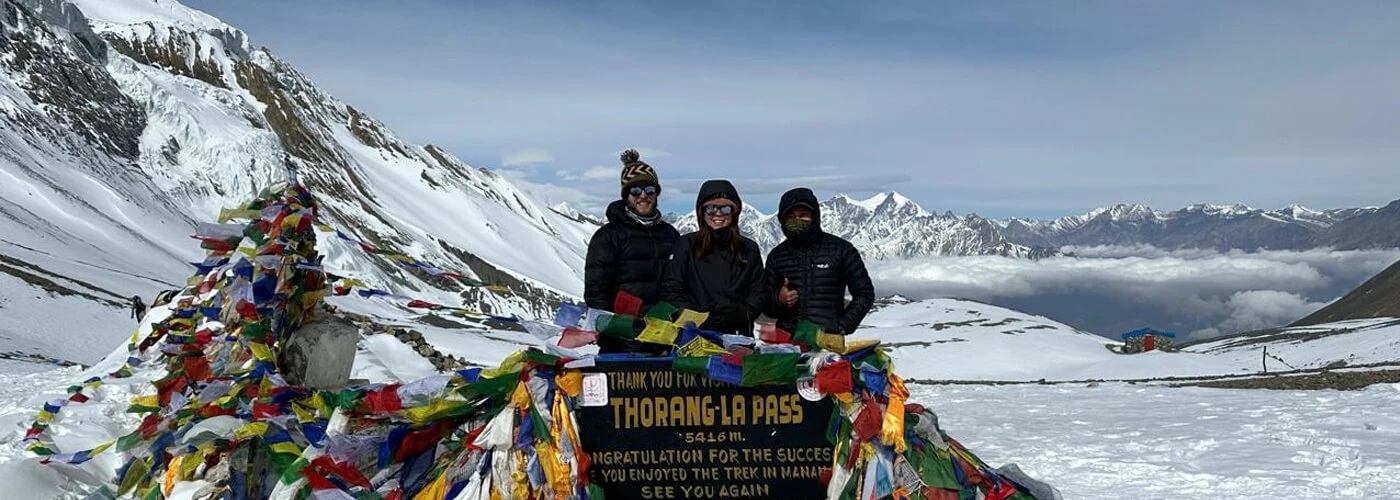

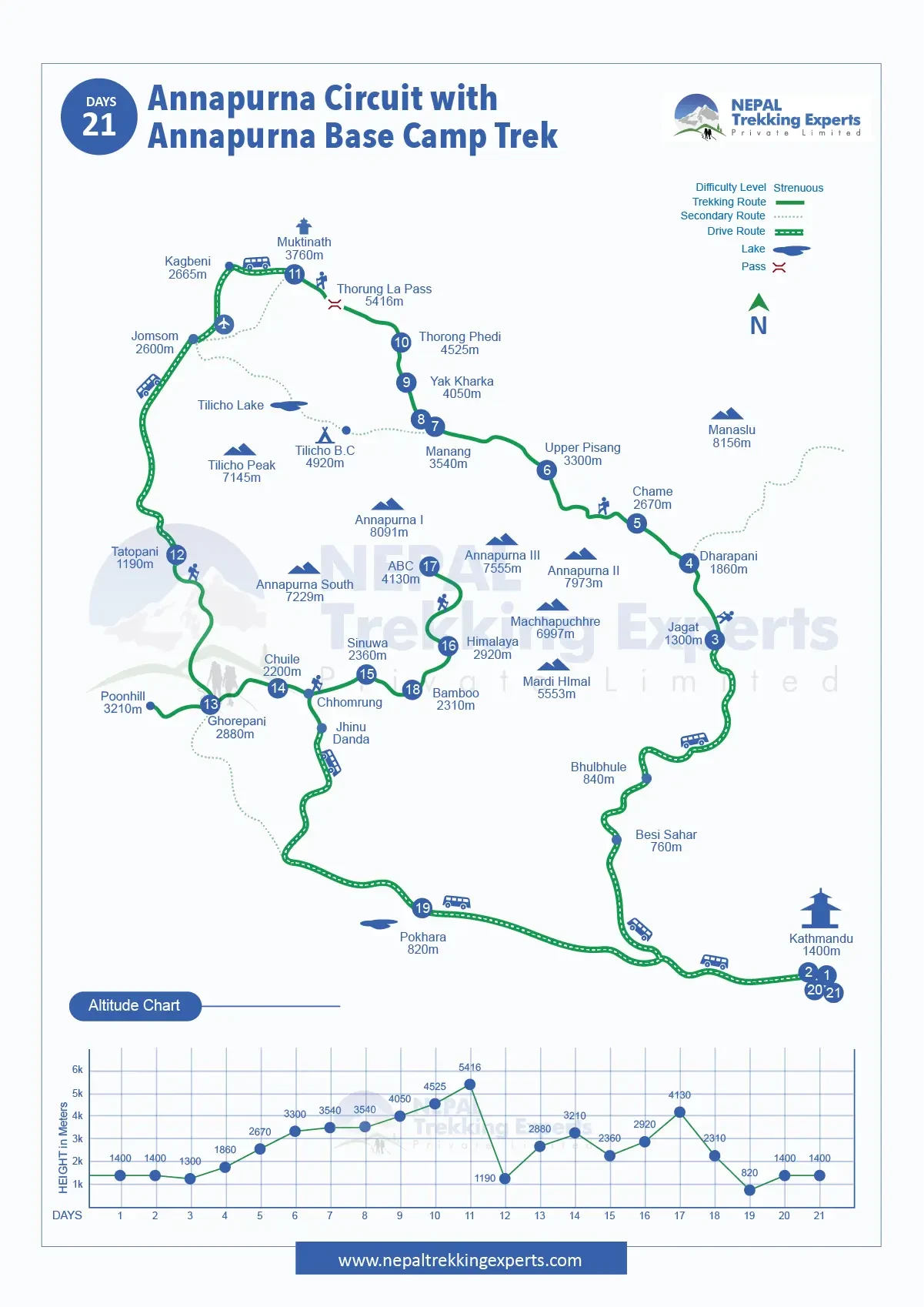

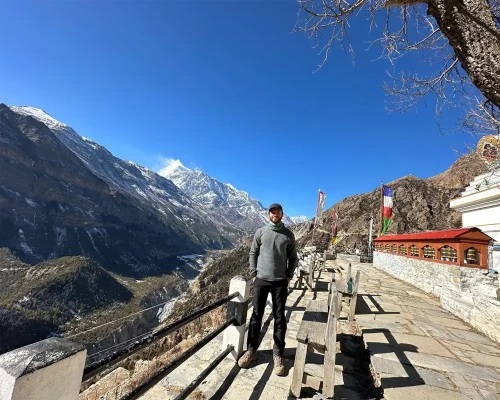

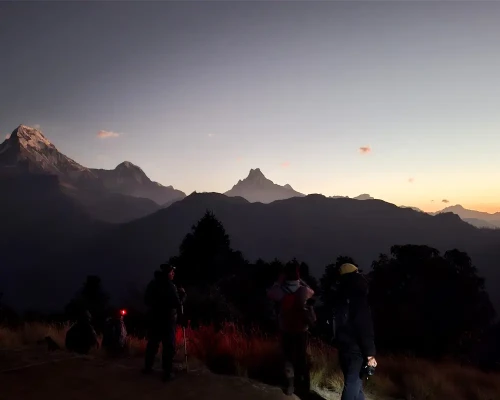

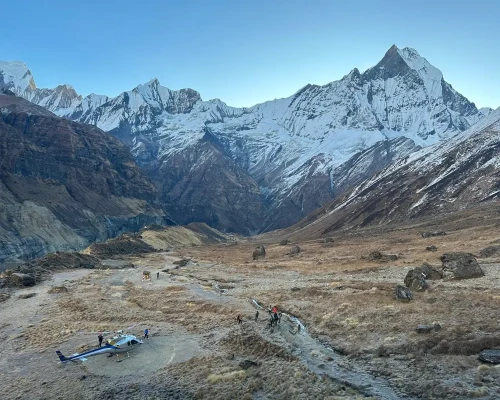
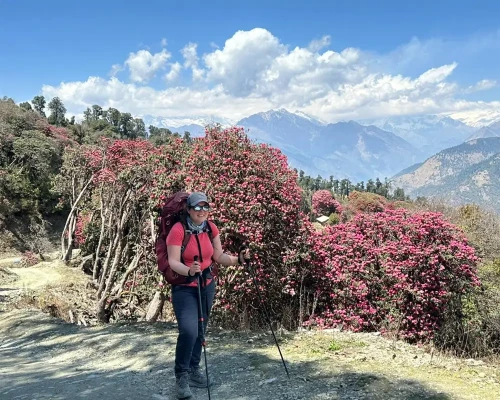
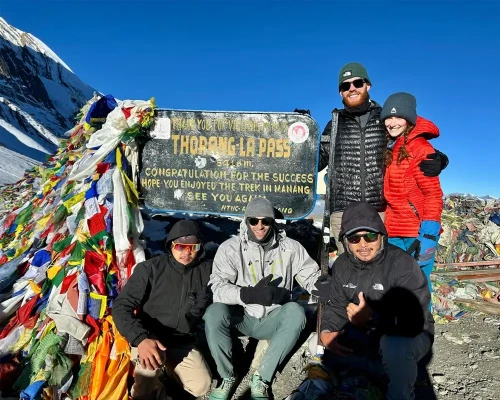
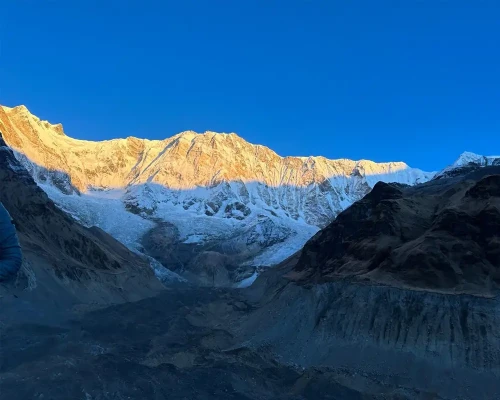
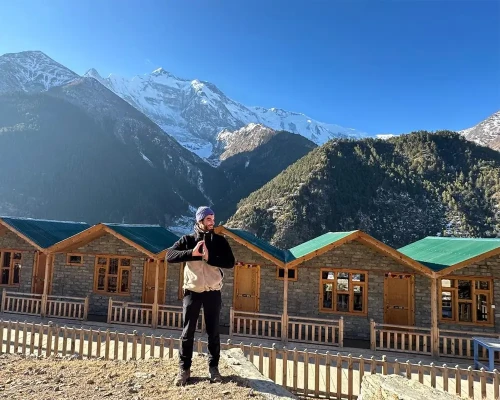
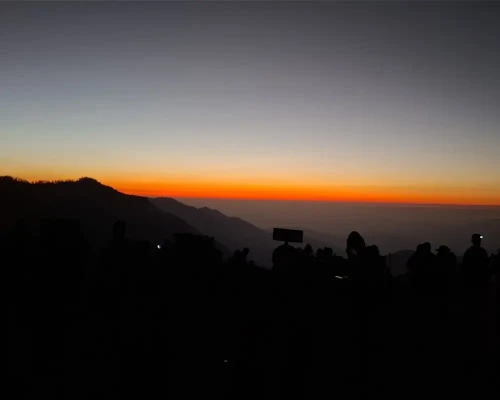

 based on 18 reviews
based on 18 reviews




